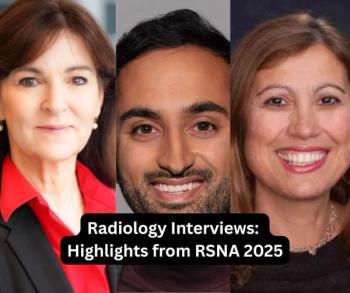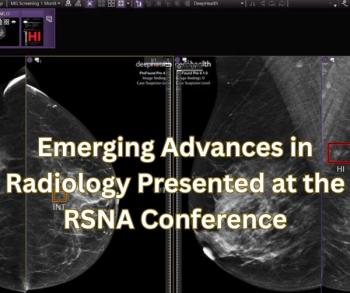
Siemens IT platform promises boost in MR, CT productivity
Siemens unveiled a new information technology at RSNA 2009: software that promises to do the tedious and time-consuming tasks involved in reading MR and CT exams. The new product, a work-in-progress pending FDA clearance, is an outgrowth of the syngo platform that Siemens has used for years to provide consistency in data processing among its modalities.
Siemens unveiled a new information technology at RSNA 2009: software that promises to do the tedious and time-consuming tasks involved in reading MR and CT exams. The new product, a work-in-progress pending FDA clearance, is an outgrowth of the syngo platform that Siemens has used for years to provide consistency in data processing among its modalities.
The new syngo.via takes the concept of data sharing to a new level, integrating the data-intensive modalities with IT. Then, using the computing power built into the syngo server, it automates many of the tedious and time-consuming tasks typically encountered when reading voluminous MR and CT studies.
Syngo.via is now operating at 13 sites in the U.S. and Europe. The limited rollout now under way will about double the number of installed sites of syngo.via in the first quarter of next year. General release is expected in early summer.
In its run-up to the RSNA meeting, Siemens was teasing the radiology community with promotions hinting at the capability of its syngo.via, while keeping the details under embargo until today. Syngo.via makes the reading process much faster, said Arthur Kaindl, CEO of Siemens Image and Knowledge Management.
"Whenever a scan is acquired, data is sent to the syngo.via application server, where syngo automatically detects what it needs to do," Kaindl said. "It matches the scan to the appropriate workflow."
Cardiac CT offers a prime example of how syngo.via prepares a coronary CT case for interpretation: It removes the blood pool and ribs, selects the best suitable cardiac phase, then segments and labels the coronary arteries.
"We have statements from customers saying that they can reduce CT angiography reading time from an average of 20 or 25 minutes to about five minutes, so it is a fivefold increase in spread of reading, thanks to automatic case preparation," Kaindl said.
Another advantage of syngo.via is "structured case navigation," he said, whereby the Siemens software goes through various zones of the body and prepares them for reading. Syngo.via further speeds the diagnostic process by integrating imaging modalities with IT to simplify the process of information sharing. This integration is optimized by "data-streaming" studies to colleagues and referring physicians, using technology that quickens the transit time of images.
Newsletter
Stay at the forefront of radiology with the Diagnostic Imaging newsletter, delivering the latest news, clinical insights, and imaging advancements for today’s radiologists.




























